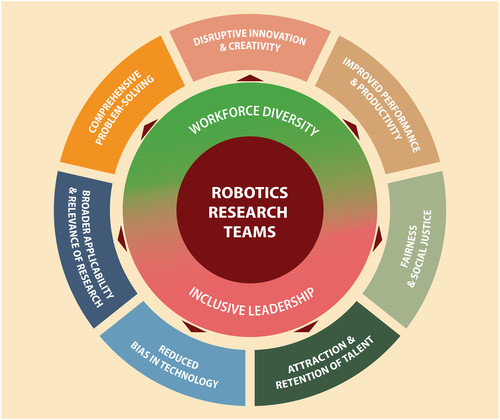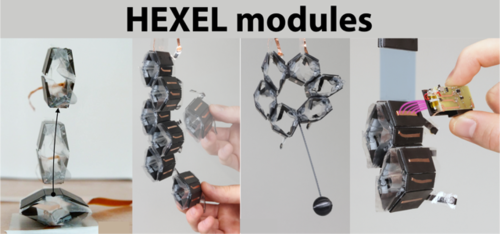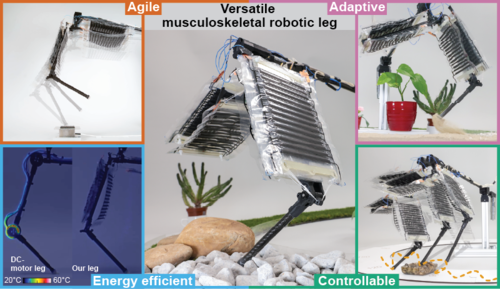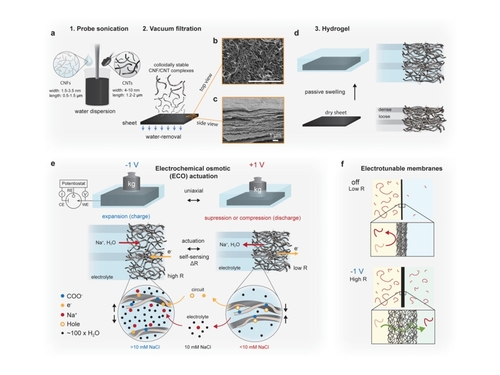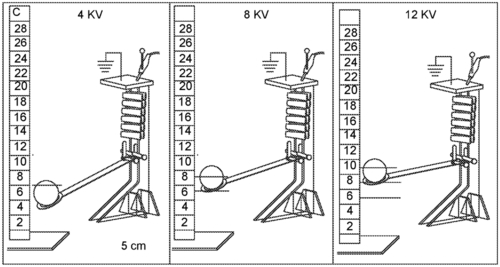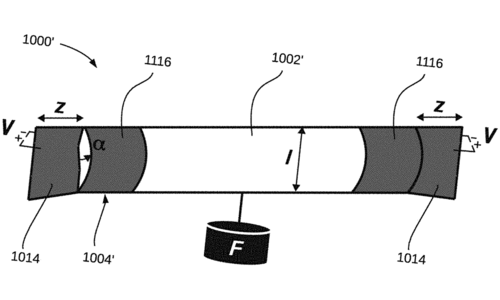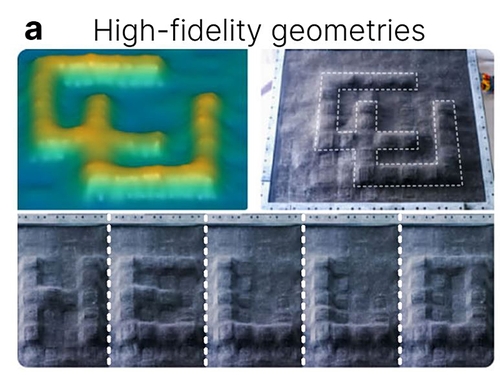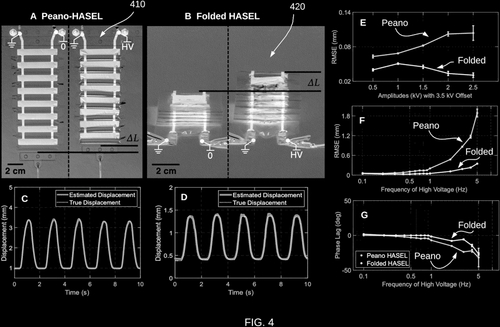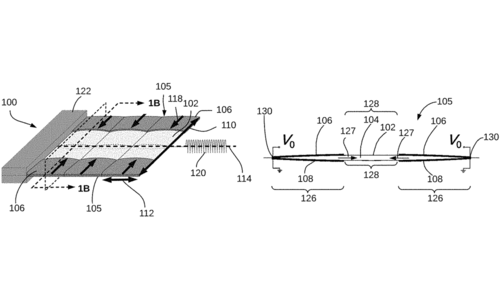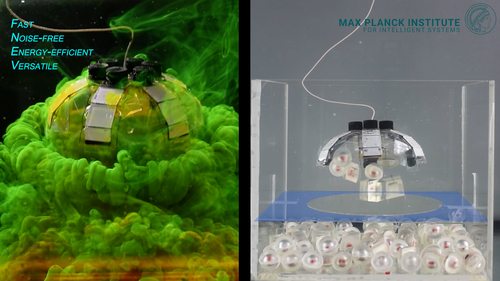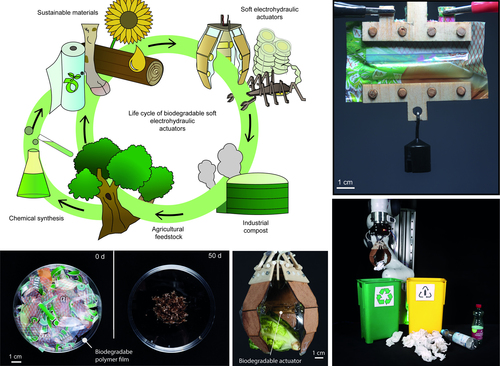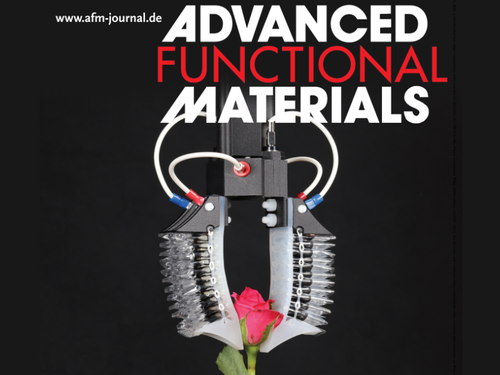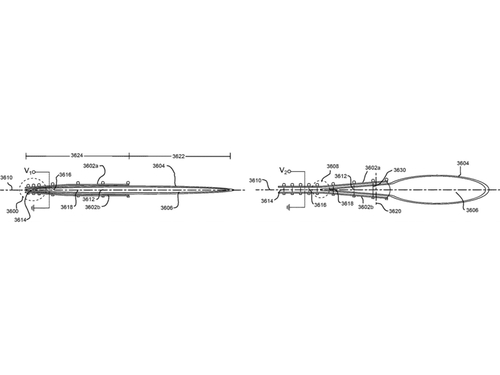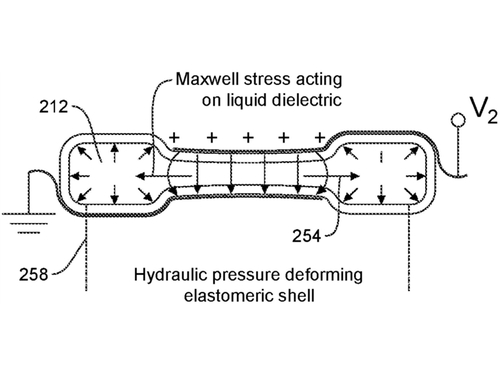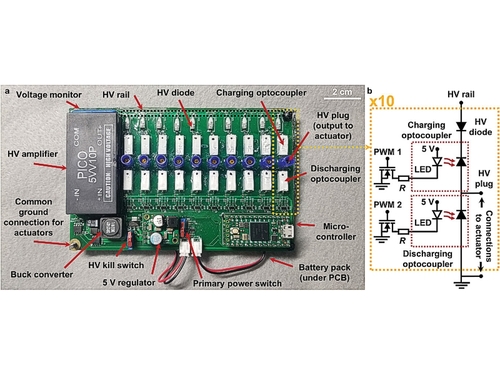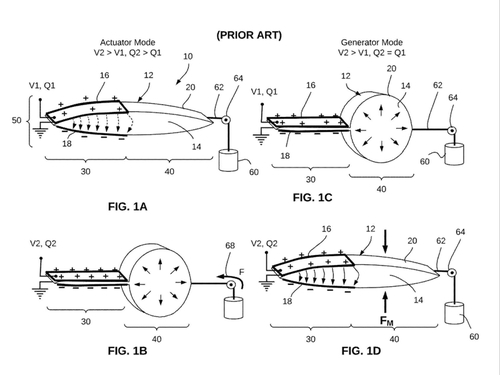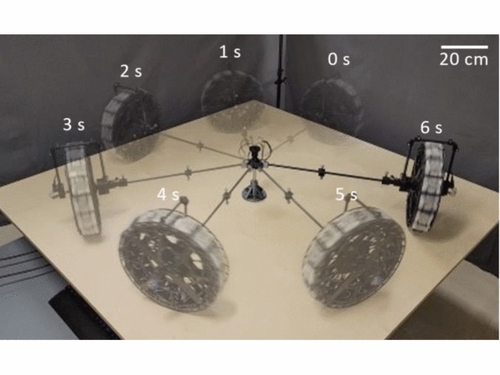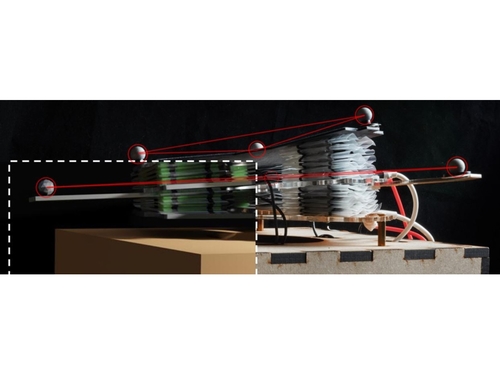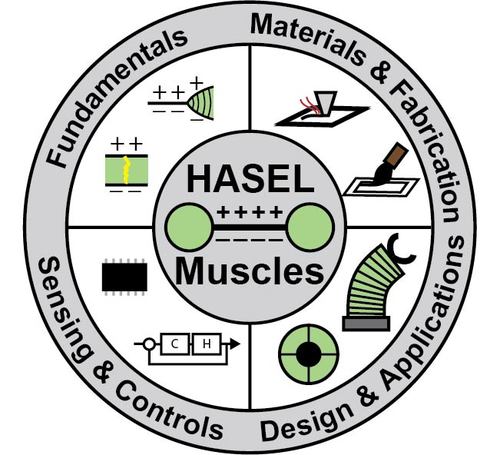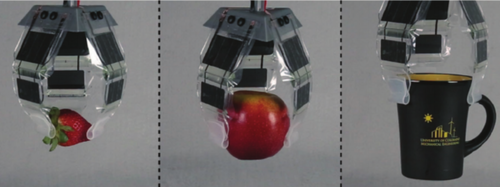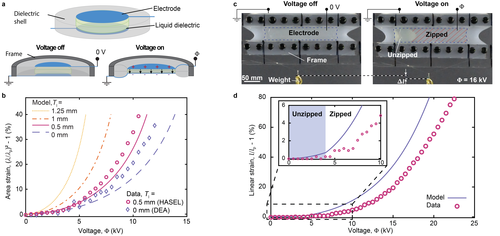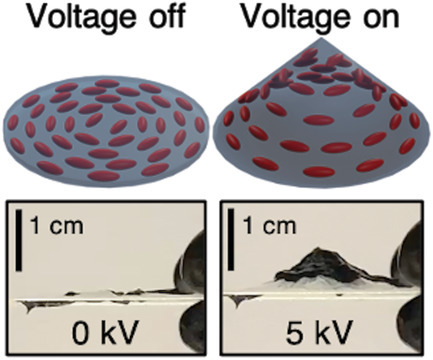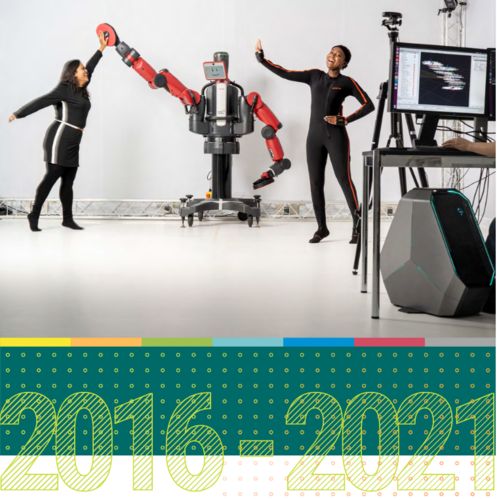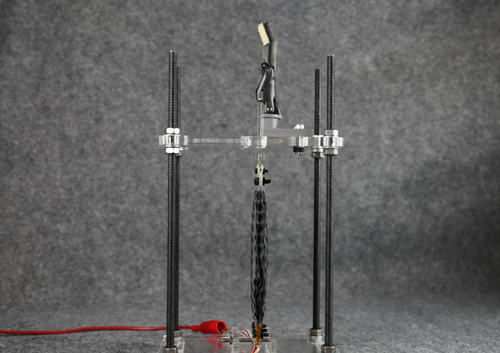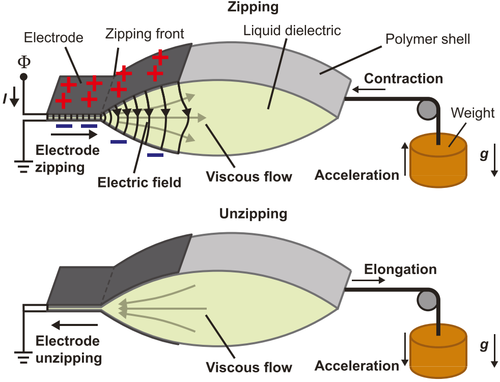2024
Macari, D., Fratzl, A., Keplinger, K., Keplinger, C.
Accelerating the pace of innovation in robotics by fostering diversity and inclusive leadership
Science Robotics, 9, December 2024 (article)
Yoder, Z., Rumley, E., Schmidt, I., Rothemund, P., Keplinger, C.
Hexagonal electrohydraulic modules for rapidly reconfigurable high-speed robots
Science Robotics, 9, September 2024 (article)
Sanchez-Tamayo, N., Yoder, Z., Rothemund, P., Ballardini, G., Keplinger, C., Kuchenbecker, K. J.
Cutaneous Electrohydraulic (CUTE) Wearable Devices for Pleasant Broad-Bandwidth Haptic Cues
Advanced Science, (2402461):1-14, September 2024 (article)
Buchner, T. J. K., Fukushima, T., Kazemipour, A., Gravert, S., Prairie, M., Romanescu, P., Arm, P., Zhang, Y., Wang, X., Zhang, S. L., Walter, J., Keplinger, C., Katzschmann, R. K.
Electrohydraulic Musculoskeletal Robotic Leg for Agile, Adaptive, yet Energy-Efficient Locomotion
Nature Communications, 15(1), September 2024 (article)
Sanchez-Tamayo, N., Yoder, Z., Ballardini, G., Rothemund, P., Keplinger, C., Kuchenbecker, K. J.
Cutaneous Electrohydraulic (CUTE) Wearable Devices for Multimodal Haptic Feedback
Extended abstract (1 page) presented at the IEEE RoboSoft Workshop on Multimodal Soft Robots for Multifunctional Manipulation, Locomotion, and Human-Machine Interaction, San Diego, USA, April 2024 (misc)
Sanchez-Tamayo, N., Yoder, Z., Ballardini, G., Rothemund, P., Keplinger, C., Kuchenbecker, K. J.
Cutaneous Electrohydraulic Wearable Devices for Expressive and Salient Haptic Feedback
Hands-on demonstration presented at the IEEE Haptics Symposium, Long Beach, USA, April 2024 (misc)
Sanchez-Tamayo, N., Yoder, Z., Ballardini, G., Rothemund, P., Keplinger, C., Kuchenbecker, K. J.
Demonstration: Cutaneous Electrohydraulic (CUTE) Wearable Devices for Expressive and Salient Haptic Feedback
Hands-on demonstration presented at the IEEE RoboSoft Conference, San Diego, USA, April 2024 (misc)
2023
Benselfelt, T., Shakya, J., Rothemund, P., Lindström, S. B., Piper, A., Winkler, T. E., Hajian, A., Wågberg, L., Keplinger, C., Hamedi, M. M.
Electrochemically Controlled Hydrogels with Electrotunable Permeability and Uniaxial Actuation
Advanced Materials, 35(45):2303255, Wiley-VCH GmbH, November 2023 (article)
Keplinger, C. M., Acome, E. L., Kellaris, N. A., Mitchell, S. K.
Hydraulically Amplified Self-healing Electrostatic Actuators
(US Patent 11795979B2), October 2023 (patent)
Keplinger, C. M., Wang, X., Mitchell, S. K.
High Strain Peano Hydraulically Amplified Self-Healing Electrostatic (HASEL) Transducers
(US Patent App. 18/138,621), August 2023 (patent)
Johnson, B. K., Naris, M., Sundaram, V., Volchko, A., Ly, K., Mitchell, S. K., Acome, E., Kellaris, N., Keplinger, C., Correll, N., Humbert, J. S., Rentschler, M. E.
A Multifunctional Soft Robotic Shape Display with High-speed Actuation, Sensing, and Control
Nature Communications, 14(1), July 2023 (article)
Correll, N., Ly, K. D., Kellaris, N. A., Keplinger, C. M.
Capacitive Self-Sensing for Electrostatic Transducers with High Voltage Isolation
(US Patent App. 17/928,453), June 2023 (patent)
Keplinger, C. M., Wang, X., Mitchell, S. K.
High Strain Peano Hydraulically Amplified Self-healing Electrostatic (HASEL) Transducers
(US Patent 11635094), April 2023 (patent)
Wang, T., Joo, H., Song, S., Hu, W., Keplinger, C., Sitti, M.
A Versatile Jellyfish-Like Robotic Platform for Effective Underwater Propulsion and Manipulation
Science Advances, 9(15), American Association for the Advancement of Science, April 2023, Tianlu Wang and Hyeong-Joon Joo contributed equally to this work. (article)
Rumley, E. H., Preninger, D., Shagan-Shomron, A., Rothemund, P., Hartmann, F., Baumgartner, M., Kellaris, N., Stojanovic, A., Yoder, Z., Karrer, B., Keplinger, C., Kaltenbrunner, M.
Biodegradable Electrohydraulic Actuators for Sustainable Soft Robots
Science Advances, 9(12), 2023, Ellen H. Rumley and David Preninger were co-first authors, and Christoph Keplinger and Martin Kaltenbrunner were shared corresponding authors. (article)
Yoder, Z., Macari, D., Kleinwaks, G., Schmidt, I., Acome, E., Keplinger, C.
A Soft, Fast and Versatile Electrohydraulic Gripper with Capacitive Object Size Detection
Advanced Functional Materials, 23(3):2209080, 2023 (article)
2022
Keplinger, C. M., Acome, E. L., Kellaris, N. A., Mitchell, S. K., Morrissey, T. G.
Hydraulically Amplified Self-healing Electrostatic Transducers Harnessing Zipping Mechanism
(US Patent 11486421B2), November 2022 (patent)
Mitchell, S. K., Acome, E. L., Keplinger, C. M.
Hydraulically Amplified Self-Healing Electrostatic (HASEL) Pumps
(US Patent App. 17/635,339), October 2022 (patent)
Keplinger, C. M., Acome, E. L., Kellaris, N. A., Mitchell, S. K.
Hydraulically Amplified Self-healing Electrostatic Actuators
(US Patent 11408452), August 2022 (patent)
Mitchell, S. K., Martin, T., Keplinger, C.
A Pocket‐Sized Ten‐Channel High Voltage Power Supply for Soft Electrostatic Actuators
Advanced Materials Technologies, 7(8), August 2022 (article)
Keplinger, C. M., Mitchell, S. K., Kellaris, N. A., Rothemund, P.
Composite Layering of Hydraulically Amplified Self-Healing Electrostatic Transducers
(US Patent App. 17436455), May 2022 (patent)
Ly, K., Mayekar, J. V., Aguasvivas, S., Keplinger, C., Rentschler, M. E., Correll, N.
Electro-hydraulic Rolling Soft Wheel: Design, Hybrid Dynamic Modeling, and Model Predictive Control
IEEE Transactions on Robotics, 38(5):3044-3063, IEEE, May 2022 (article)
Hainsworth, T., Schmidt, I., Sundaram, V., Whiting, G. L., Keplinger, C., MacCurdy, R.
Simulating Electrohydraulic Soft Actuator Assemblies Via Reduced Order Modeling
SOFT ROBOTICS. IEEE INTERNATIONAL CONFERENCE. 5TH 2022. (RoboSoft 2022), pages: 21-28, Institute of Electrical and Electronics Engineers (IEEE), 2022 IEEE 5th International Conference on Soft Robotics (RoboSoft), April 2022 (conference)
Aubin, C. A., Gorissen, B., Milana, E., Buskohl, P. R., Lazarus, N., Slipher, G. A., Keplinger, C., Bongard, J., Iida, F., Lewis, J. A., Shepherd, R. F.
Towards Enduring Autonomous Robots via Embodied Energy
Nature, 602(7897):393-402, 2022 (article)
2021
Ly, K., Kellaris, N., McMorris, D., Johnson, B. K., Acome, E., Sundaram, V., Naris, M., Humbert, J. S., Rentschler, M. E., Keplinger, C., Correll, N.
Miniaturized Circuitry for Capacitive Self-sensing and Closed-loop Control of Soft Electrostatic Transducers
Soft Robotics, 8(6):673-686, Mary Ann Liebert, Inc., publishers, December 2021 (article)
Wang, Y., Liu, X., Wang, Y., Wang, H., Wang, H., Zhang, S. L., Zhao, T., Xu, M., Wang, Z. L.
Flexible Seaweed-Like Triboelectric Nanogenerator as a Wave Energy Harvester Powering Marine Internet of Things
ACS Nano, 15(10):15700-15709, October 2021 (article)
Purnendu, , Novack, S., Acome, E., Alistar, M., Keplinger, C., Gross, M. D., Bruns, C., Leithinger, D.
Electriflow: Augmenting Books With Tangible Animation Using Soft Electrohydraulic Actuators
In ACM SIGGRAPH 2021 Labs, pages: 1-2, Association for Computing Machinery, SIGGRAPH 2021, August 2021 (inbook)
Purnendu, , Novack, S., Acome, E., Alistar, M., Keplinger, C., Gross, M. D., Bruns, C., Leithinger, D.
Electriflow: Augmenting Books With Tangible Animation Using Soft Electrohydraulic Actuators
In SIGGRAPH ’21: ACM SIGGRAPH 2021 Labs, pages: 8, ACM, New York, NY, Special Interest Group on Computer Graphics and Interactive Techniques Conference (SIGGRAPH 2021), July 2021 (inproceedings)
Purnendu, , Novack, S. M., Acome, E., Keplinger, C., Alistar, M., Gross, M. D., Bruns, C., Leithinger, D.
Electriflow: Soft Electrohydraulic Building Blocks for Prototyping Shape-changing Interfaces
In DIS ’21: Designing Interactive Systems Conference 2021, pages: 1280-1290, ACM, New York, NY, Designing Interactive Systems Conference (DIS 2021), June 2021 (inproceedings)
Purnendu, , Acome, E., Keplinger, C., Gross, M. D., Bruns, C., Leithinger, D.
Soft Electrohydraulic Actuators for Origami Inspired Shape-Changing Interfaces
In CHI EA ’21: Extended Abstracts of the 2021 CHI Conference on Human Factors in Computing Systems, pages: 377, ACM, New York, NY, Conference on Human Factors in Computing Systems (CHI 2021), May 2021 (inproceedings)
Keplinger, C. M., Acome, E. L., Kellaris, N. A., Mitchell, S. K.
Hydraulically amplified self-healing electrostatic actuators
(US Patent 10995779), May 2021 (patent)
Keplinger, C. M., Acome, E. L., Kellaris, N. A., Mitchell, S. K., Morrissey, T. G.
Hydraulically Amplified Self-Healing Electrostatic Transducers Harnessing Zipping Mechanism
(US Patent 20210003149A1), January 2021 (patent)
Rothemund, P., Kellaris, N., Mitchell, S. K., Acome, E., Keplinger, C.
HASEL Artificial Muscles for a New Generation of Lifelike Robots—Recent Progress and Future Opportunities
Advanced Materials, 33(19):2003375, 2021, Nicholas Kellaris, Shane K. Mitchell, and Eric Acome contributed equally to this publication. (article)
Wang, Y., Liu, D., Hu, Z., Chen, T., Zhang, Z., Wang, H., Du, T., Zhang, S. L., Zhao, Z., Zhou, T., Xu, M.
A Triboelectric-Nanogenerator-Based Gas–Solid Two-Phase Flow Sensor for Pneumatic Conveying System Detecting
Advanced Materials Technologies, 6(5):2001270, 2021 (article)
Rothemund, P., Kim, Y., Heisser, R. H., Zhao, X., Shepherd, R. F., Keplinger, C.
Shaping the future of robotics through materials innovation
Nature Materials, 20(12):1582-1587, 2021 (article)
Kellaris, N., Rothemund, P., Zeng, Y., Mitchell, S. K., Smith, G. M., Jayaram, K., Keplinger, C.
Spider-Inspired Electrohydraulic Actuators for Fast, Soft-Actuated Joints
Advanced Science, 8(14):2100916, 2021 (article)
Kirkman, S., Rothemund, P., Acome, E., Keplinger, C.
Electromechanics of Planar HASEL Actuators
Extreme Mechanics Letters, 48, pages: 101408, 2021 (article)
Fowler, H. E., Rothemund, P., Keplinger, C., White, T. J.
Liquid Crystal Elastomers with Enhanced Directional Actuation to Electric Fields
Advanced Materials, 33(43):2103806, 2021 (article)
Scientific Report 2016 - 2021
2021 (mpi_year_book)
2020
Yoder, Z., Kellaris, N., Chase-Markopoulou, C., Ricken, D., Mitchell, S. K., Emmett, M. B., Segil, J., Keplinger, C.
Design of a High-Speed Prosthetic Finger Driven by Peano-HASEL Actuators
Frontiers in Robotics and AI, 7, pages: 586216, Frontiers, November 2020 (article)
Ly, K., Kellaris, N., McMorris, D., Johnson, B. K., Acome, E., Sundaram, V., Naris, M., Humbert, J. S., Rentschler, M. E., Keplinger, C., Correll, N.
Miniaturized circuitry for capacitive self-sensing and closed-loop control of soft electrostatic transducers
Soft Robotics, Mary Ann Liebert, Inc., publishers, October 2020 (article)
O’Neill, M. R., Acome, E., Bakarich, S., Mitchell, S. K., Timko, J., Keplinger, C., Shepherd, R. F.
Rapid 3D Printing of Electrohydraulic (HASEL) Tentacle Actuators
Advanced Functional Materials, 30(40):2005244, August 2020 (article)
Baumgartner, R., Kogler, A., Stadlbauer, J. M., Foo, C. C., Kaltseis, R., Baumgartner, M., Mao, G., Keplinger, C., Koh, S. J. A., Arnold, N., Suo, Z., Kaltenbrunner, M., Bauer, S.
A Lesson from Plants: High‐Speed Soft Robotic Actuators
Advanced Materials, 7(5):1903391, March 2020 (article)
Johnson, B. K., Sundaram, V., Naris, M., Acome, E., Ly, K., Correll, N., Keplinger, C., Humbert, J. S., Rentschler, M. E.
Identification and Control of a Nonlinear Soft Actuator and Sensor System
IEEE Robotics and Automation Letters, 5(3):3783-3790, March 2020 (article)
Wang, X., Mitchell, S. K., Rumley, E. H., Rothemund, P., Keplinger, C.
High-Strain Peano-HASEL Actuators
Advanced Functional Materials, 30(7):1908821, 2020 (article)
Rothemund, P., Kirkman, S., Keplinger, C.
Dynamics of Electrohydraulic Soft Actuators
Proceedings of the National Academy of Sciences of the United States of America, 117(28):16207-16213, 2020 (article)
2019
Mitchell, S. K., Wang, X., Acome, E., Martin, T., Ly, K., Kellaris, N., Venkata, V. G., Keplinger, C.
An Easy‐to‐Implement Toolkit to Create Versatile and High‐Performance HASEL Actuators for Untethered Soft Robots
Advanced Science, 6(14):1900178, June 2019 (article)
Sun, J. Y., Keplinger, C. M., Suo, Z., Whitesides, G. M.
Stretchable ionics for transparent sensors and actuators
(US Patent 10302586 B2), May 2019 (patent)
Morrissey, T. G., Mitchell, S. K., Jaros, A. T., Ambos, E., Keplinger, C.
Mechanical‐to‐Electrical Energy Conversion with Variable Electric Double Layers
Energy Technology, 7(4):1801007, WILEY-VCH, March 2019 (article)
McMahon, J., Mitchell, S. K., Oguri, K., Kellaris, N., Kuettel, D., Keplinger, C., Bercovici, B.
Area-of-effect softbots (aoes) for asteroid proximity operations
In 2019 IEEE Aerospace Conference (AERO 2019), pages: 1554-1569, IEEE, Piscataway, NJ, IEEE Aerospace Conference (AERO 2019), 2019 (inproceedings)

